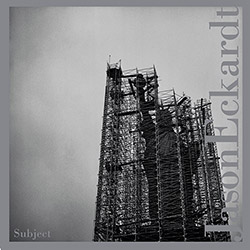
Composer Jason Eckardt presents "Subject", a work that confronts "enhanced interrogation" techniques using sound and light, plus other works including a 6 part piece about glossolalia ("Tongues"), performed by JACK, ICE, and the Oberlin Contemporary Music Ensemble.
Out of Stock
Special Order
Quantity in Basket: None
Log In to use our Wish List
Shipping Weight: 5.00 units
Sample The Album:
Tony Arnold-soprano
Gabrielle Athayde-cellos
Danielle Bogacz-horn
Jay Campbell-cellos
Jordan Dodson-guitars
Laura Dykes-bass
Wendy Everett-bassoon
David Fulmer-conductor
Grace Hong-oboe
Matthew Jenkins-percussion
Ross Karre-percussion
Eric Lamb-flutes
Daniel Lippel-guitars
Campbell MacDonald-clarinets
Andrew McCollum-clarinets
Kevin McFarland-cellos
Marilyn Nonken-piano
Christopher Otto-violins
Erin Ponto-harp
John Pickford Richards-violas
Wendy Richman-violas
Hannah Shaw-violas
Ari Streisfeld-violins
Alice Teyssier-flutes
Timothy Weiss-conductor
Jeffrey Young-violins
Yuncong Zhang-violins
Click an artist name above to see in-stock items for that artist.
UPC: 702397900627
Label: Tzadik
Catalog ID: TZA-CD-9006
Squidco Product Code: 20860
Format: CD
Condition: New
Released: 2015
Country: USA
Packaging: Jewel Case
Recording info not listed.
"Jason Eckardt began as a heavy metal guitarist and turned to contemporary music after hearing Webern. His music is highly complex andr etains the energy and intensity of his heavy metal roots. Challenging and highly virtuosic, his compositional language embraces both uptown and downtown. Brilliantly performed by JACK, ICE and the Oberlin Contemporary Music Ensemble, "Subject" contains some of his most extreme and intense works."-Tzadik
Subject
Beginning in the 1950s, the CIA became very interested in psychological research being conducted on the effects of sensory deprivation on humans. The research, that suggested rapid regression in those tested, provided a framework for sections of what would later be known as the KUBARK manual, the first in a series of US-government documents that provided techniques for interrogating detainees. These methods involved radically altering a detainee's sense of time and environment.
Among these techniques, some developed independently of the manuals by interrogators, were the manipulation of light and sound. In order to weaken the resolve of a detainee and prolong "capture shock," complete sensory deprivation followed by blasts of light or noise, or very loud music, proved effective. So much so that variations and combinations of these techniques were widely used by the United States as well as both its allies and enemies in Vietnam, Latin America, Northern Ireland, and the Middle East.
Though the idea of sound as a weapon is at least as old as the account of Joshua's siege of Jericho, it was only recently deemed "inhuman and degrading" for the purposes of interrogation by the European Court of Human Rights in the 1978 case "Ireland v. the United Kingdom."
Paths of Resistance
The dramatic tension in "Paths of Resistance" results from the thwarting and redirection of musical trajectories. Specific structural elements, which remain invariant throughout the work, recur in different and contradictory contexts, forging pathways through the densely polyphonic environment. In Paths of Resistance, the surface conflicts occur within the constraints of a formal design which bisects the musical flow into proportionally related time spans. The durations of these spans are embedded in several temporal strata, providing the palpable self-similarity, with regard to formal continuity, which underlies the work's volatile exterior.
Tongues
Tongues refers to glossolalia, better known as "speaking in tongues," an ecstatic outburst of unintelligible vocal sounds that resembles spoken language. The vocal writing in Tongues evokes the volatile grip of possession that is said to hold the human vessels through which the divine or supernatural passes. In six sections that vary in instrumentation and character, the soprano gives voice to sounds that suggest the transformation from self-awareness to rapture. These sounds, not limited to phonetic utterances, often reflect the timbral properties of the accompanying ensemble. The soprano, in this "concerto for voice," oscillates between influencing and imitating her instrumental counterparts, alternately supporting, amplifying, and leading the ensemble."-Ensemble21 Website
Artist Biographies
• Show Bio for Jay Campbell "Cellist Jay Campbell has been recognized around the world for approaching both old and new works with equally probing curiosity and emotional commitment. His performances have been described as "brilliant and insatiably inquisitive", "electrifying", and "prodigious" by the New York Times, and "gentle, poignant, and deeply moving" by the Washington Post. A recipient of the prestigious Avery Fisher Career Grant, Jay performed with the New York Philharmonic in 2013 and was a curator for the New York Philharmonic's 2016 Biennale. He has soloed in major venues around the globe including Carnegie Hall's Stern Auditorium, Avery Fisher Hall, and Lucerne's KKL and performed recitals in Carnegie's Weill Hall, the Kennedy, Mondavi, and Krannert centers. Dedicated to introducing audiences to the music of our time, Jay has worked closely with some of the most creative minds of the 20th/21st centuries including Pierre Boulez, Elliott Carter, Matthias Pintscher, Kaija Saariaho, and countless others from his own generation. His close association with John Zorn has resulted in over a dozen works written for him including The Aristos, a Pulitzer Prize runner up resulting in the release of Hen to Pan (Tzadik), listed in the New York Times Best Recordings of 2015. Forthcoming discs in '16/17 include George Perle's cello concerto with the Seattle Symphony and Ludovic Morlot, a disc of Beethoven, Debussy, Stravinsky and Pintscher (Victor Elmaleh Collection), and a disc of works commissioned for Jay by David Fulmer (Tzadik). Also beginning in 2017, Jay will be the cellist of a new piano trio with violinist Stefan Jackiw and pianist Conrad Tao. He has been a guest at the Marlboro, Chamber Music Northwest, Moab, HeidelbergerFruhling, DITTO, and Lincoln Center festivals." ^ Hide Bio for Jay Campbell • Show Bio for Ross Karre "Ross Karre is a percussionist and temporal artist based in New York City. His primary focus is on combining media, including classical percussion performance, electronics, theater, moving image, visual art, and lighting design. He designs integrated, moving images that emerge from an aesthetic foundation in American experimental music as well as that of the European avant garde. Ross is a percussionist and the co-artistic director for the International Contemporary Ensemble (ICE). His projection design has been presented in such prestigious venues as the BBC Scotland (Glasgow Concert Halls), The Park Avenue Armory, Miller Theatre (NYC), and the National Gallery of Art (Washington, DC), and the Kennedy Center. As a percussionist, he has worked closely with European masters such as Pierre Boulez, Helmut Lachenmann, Chaya Czernowin, Olga Neuwirth, and Harrison Birtwistle. Karre has been a percussionist and staff member of the International Contemporary Ensemble (ICE) since 2011 and also performs regularly with Third Coast Percussion (Chicago), red fish blue fish, and the National Gallery of Art new music ensemble. Using his background as a percussionist, production manager, and projection designer, Ross is active as a production coordinator and designer of several intermedia operas and staged works by Ashley Fure, Pauline Oliveros, Suzanne Farrin, and many more. He has collaborated as a producer/designer on the world's largest scale productions at the Park Avenue Armory, Holland Festival, Ojai Festival, and Lincoln Center. As a teacher, Ross is a regular guest lecturer and clinician on topics ranging from contemporary percussion and media to arts administration and professional development. He has been invited to return to his alma maters of Oberlin Conservatory, UCSD, and Interlochen Arts Academy as well as the Eastman School, Bard College, the Carnegie Hall Professional Training Workshops, and dozens more. Ross has organized several unique university residencies for the International Contemporary Ensemble at RPI, Kent State, MacAlester, the University of Michigan and other institutions in South America and Europe. As a traveling artist, Ross has presented work at nearly every major festival in Europe and the United States including those in Lucerne, Darmstadt, Holland Festival, Ojai Festival, Mostly Mozart, Aspekte Festival (Austria), Eight Bridges (Cologne), Rotterdam, Reykjavik, Copenhagen, Banff (Canada), Mona Foma (Tasmania), Far North (Greenland), and the Park Avenue Armory. In 2011, Ross commenced two major archiving projects which seek to document and distribute recorded performances of hundreds of artist-clients all of the world. The rKAD media collective and metafields.org have become vital parts of the contemporary music scene by preserving and proliferating the important works of emerging and established artists." ^ Hide Bio for Ross Karre • Show Bio for Daniel Lippel "Guitarist Daniel Lippel, called an "exciting soloist" (New York Times) and "precise and sensitive" (Boston Globe) has carved out a unique and diverse career that ranges through solo and chamber music performances, innovative commissioning and recording projects, and performances in diverse contexts. He has premiered more than fifty new solo and chamber works, many written for him, recording several on the independent label he co-founded and directs, New Focus Recordings. Recent performance highlights include recitals at Le Poisson Rouge in New York, Sinus Ton Festival (Germany), National University of Colombia in Bogota, Lawrence University (Wisconsin), and the New York, Philadelphia, and Cleveland Classical Guitar Societies, featured solo performances at the ZKM in Karlsruhe Germany with the SWR Experimental Studio Freiburg, MATA Festival, and WNYC's Greene Space, and chamber performances on the Macau Music Festival (China), Mostly Mozart Festival at Lincoln Center, Ojai Festival, Ottawa Chamber Festival, Aspekte Festival (Salzburg), Kunst Universitaet Graz (Austria), Alpenglow and Newburyport Chamber Music Festivals, and at Teatro Amazonas (Manaus, Brasil), Sibelius Academy (Finland), and Zankel and Weill Halls at Carnegie Hall. Lippel has been a member of the new music ensemble counter)induction since 2019, FretX duo with Mak Grgic since 2015, the International Contemporary Ensemble (ICE) since 2006, Con Vivo Music since 2004, and new music quartet Flexible Music from 2003, as well as a guest with many other ensembles including the St. Paul Chamber Orchestra, New York New Music Ensemble, New York City Opera, Wet Ink Ensemble, Talea Ensemble, Either/Or Ensemble, Cantata Profana, Wavefield Ensemble, Dinosaur Annex, Axiom Ensemble, Classical Cafe, Cygnus Ensemble, Ensemble Dal Niente, and Pink Noise Ensemble, in addition to performing with many chamber collaborators in smaller ensemble formations. Lippel has worked closely with many eminent composers including Mario Davidovsky, Ursula Mamlok, Nils Vigeland, and John Zorn, and collaborated on new works with several of the community's most active composers, including Dai Fujikura, Tyshawn Sorey, Reiko Fueting, Douglas Boyce, John Aylward, Christopher Trapani, Marcos Balter, Kyle Bartlett, Wang Lu, Peter Gilbert, Mikel Kuehn, Ken Ueno, John Link, Ryan Streber, Nathan Davis, and Du Yun. He has had the opportunity to perform chamber and ensemble music by Elliott Carter, Steve Reich, Olga Neuwirth, Charles Wuorinen, Kaija Saariaho, George Lewis, Louis Andriessen, and George Crumb with the composers in attendance. Lippel's recordings have garnered him critical acclaim from several publications including the New York Times, Boston Globe, Gramophone, American Record Guide, Chicago Reader, New Music Box, and Sequenza21. His work encompasses repertoire for both classical and electric guitars. In addition to the thirteen recordings he has released as a primary artist on New Focus, he appears on over forty recordings across many genres on several labels including Kairos, Bridge, SONY MUSIC/Minabel Records, Innova, Sono Luminus, Albany, Tzadik, Wergo, New Amsterdam, and New World, and as a producer and co-producer on several New Focus releases. Other collaborations on the improvised to through composed continuum have included Collage Project with bassist Aidan Plank and guitarist Dan Bruce, performances and recordings of pianist/composer Cory Smythe's music, a duo of original and improvised music with guitarist/composer Alejandro Florez, and Will Mason's Happy Place, several years as a member of Adam Tully's Zvi Migdal Tango Ensemble, and multiple recordings and international tours with eclectic indie group Mice Parade. In commercial recording, Lippel was featured on the Elliot Goldenthal score for Netflix's "Our Souls at Night" and the film "The Longest Week." As an educator, Lippel is particularly interested in demystifying the contemporary repertoire for guitarists, and the guitar for composers. He has given guitar masterclasses and presentations at many institutions including the Hanns Eisler Hochschule in Berlin, Curtis Institute in Philadelphia, National University of Colombia in Bogota, Sydney Conservatorium of Music (Australia), San Francisco Conservatory of Music, Cleveland Institute of Music, and Syracuse University and guest lecture presentations to composition departments at the Peabody Institute of Music, University of Texas at Austin, DePaul University, New York University, University of California at Davis, as well as a presentation to the 2016 Guitar Foundation of America conference on guitar and electronics repertoire. He was on faculty at Bowling Green State University in Ohio teaching classical guitar from 1999-2001 and received the Doctor of Musical Arts Degree from the Manhattan School of Music, writing his dissertation on the guitar works of Mario Davidovsky. He was the winner of the Senior Guitar Division in the 2000 ASTA National Competition. His primary teachers have included David Starobin at Manhattan School of Music, Jason Vieaux and John Holmquist as part of his Bachelor's and Master's degrees from the Cleveland Institute of Music, Steve Aron as an undergraduate at Oberlin Conservatory, and David Leisner and Nicholas Goluses prior to college." ^ Hide Bio for Daniel Lippel • Show Bio for Kevin McFarland "Kevin McFarland is a member of Ensemble Signal and has made guest appearances with Alarm Will Sound, the International Contemporary Ensemble, and the Wordless Music Orchestra. He also composes, with recent performances by mezzo-soprano Abby Fischer as part of her ABSYNTH project and by Hutchins Consort East with whom he also plays the tenor violin. He sometimes distributes electronic music under various monikers which are only quasi-secret. He is also active as a solo artist, both as interpreter of new works for solo cello as well as improviser. He made his solo cello and electronics debut at The Stone in 2014. Kevin holds a Bachelor's Degree from the Eastman School of Music, where he studied cello with Steven Doane and composition with David Liptak, Robert Morris, and Ricardo Zohn-Muldoon. His article "Second-Generation Interpretation of Xenakis' String Quartets" can be found in Performing Xenakis published by Pendragon Press. He currently calls three places home: Brooklyn, NY is his home base; Lancaster, PA is his hometown; and Denver, CO is his home away from home with his partner and two dogs." ^ Hide Bio for Kevin McFarland • Show Bio for Christopher Otto "Christopher Otto studied composition at the Eastman School of Music with Martin Bresnick, David Liptak, and Robert Morris. As a violinist, Christopher has premiered many compositions and worked with such composers as Harrison Birtwistle, Pierre Boulez, Helmut Lachenmann, and Steve Reich. Christopher has participated as composer and performer in such contemporary music festivals as the Lucerne Festival Academy, Internationale Musikinstitut Darmstadt, Karlheinz Stockhausen Courses, Institute and Festival for Contemporary Performance at the Mannes College of Music, June in Buffalo, and Festival Internacional de Música Contemporánea de Michoacán." ^ Hide Bio for Christopher Otto • Show Bio for John Pickford Richards "Called "wholesome-looking" by the New York Times, violist John Pickford Richards has gained a reputation for performing new and unusual music. Before playing in JACK, he was a founding member of the ensemble Alarm Will Sound, allowing him to work closely with composers such as John Adams, Meredith Monk, and Steve Reich at venues such as Carnegie Hall, Lincoln Center, and the Holland Festival. John has appeared with bands such as the All-American Rejects, Silversun Pickups, and Grizzly Bear and has performed as soloist with the Pasadena Symphony, Armenian Philharmonic, Wordless Music Orchestra, Ossia New Music, and with the Lucerne Festival Academy Orchestra playing the solo part to Luciano Berio's Chemins II under the direction of Pierre Boulez. He holds degrees from the Interlochen Arts Academy and Eastman School of Music where his primary teachers were David Holland and John Graham." ^ Hide Bio for John Pickford Richards • Show Bio for Wendy Richman "Wendy Richman has been celebrated internationally for her compelling sound and imaginative interpretations. As a soloist and chamber musician, she has performed at Carnegie Hall, Lincoln Center Festival, Metropolitan Museum of Art, Miller Theater, Mostly Mozart Festival, Park Avenue Armory, Phillips Collection, and international festivals in Berlin, Darmstadt, Helsinki, Hong Kong, Karlsruhe, Morelia, and Vienna. Former violist of The Rhythm Method string quartet, Wendy is a founding member of the New York-based International Contemporary Ensemble (ICE). Hailed by The New York Times and The Washington Post for her "absorbing," "fresh and idiomatic" performances with "a brawny vitality," Wendy collaborates closely with a wide range of composers. She presented the U.S. premieres of Kaija Saariaho's Vent nocturne, Roberto Sierra's Viola Concerto, and a fully- staged version of Luciano Berio's Naturale. Upon hearing her interpretation of Berio's Sequenza VI, The Baltimore Sun commented that she made "something at once dramatic and poetic out of the aggressive tremolo-like motif of the piece." Though best known for her interpretations of contemporary music, Wendy enjoys performing a diverse range of repertoire. She regularly performs with NYC's Orpheus Chamber Orchestra and has collaborated with fortepianist Malcolm Bilson, the Claremont and Prometheus Trios, and members of the Cleveland, Juilliard, and Takács Quartets. She has also been a frequent guest with the viola sections of the Atlanta Symphony, Minnesota Orchestra, and St. Louis Symphony. Wendy is on the string faculty of New York University (NYU Steinhardt), where she teaches viola, chamber music, and a class on extended string techniques. She has also held teaching positions at the University of Tennessee, University of Alabama, and Cornell University, as well as NYU Summer Strings, Walden School Summer Young Musicians Program, Sewanee Summer Music Festival, and Music in the Mountains Conservatory. Wendy earned degrees from Oberlin Conservatory (BM), New England Conservatory (MM), and Eastman School of Music (DMA). She studied viola with Carol Rodland, Kim Kashkashian, Peter Slowik, Jeffrey Irvine, and Sara Harmelink, and voice with Marlene Ralis Rosen, Judith Kellock, and Mary Galbraith. Her debut solo album, vox/viola, was released in 2019 on New Focus Recording's TUNDRA imprint." ^ Hide Bio for Wendy Richman • Show Bio for Ari Streisfeld "Praised for his "dazzling performance" by the New York Times, violinist Ari Streisfeld has quickly established himself as a leader in contemporary classical music. In addition to his work with JACK, he frequently performs with today's leading contemporary music ensembles, including Ensemble Signal and Worldless Music Orchestra. Streisfeld is also a member of Shir Ami, an ensemble dedicated to the performance and preservation of Jewish art music. Hailed as "imaginative" by the Los Angeles Times, Streisfeld's arrangements of madrigals and motets for string quartet by Machaut and Gesualdo have been performed to acclaim both at home and abroad. A recipient of the Morton Gould Young Composer Award, Streisfeld most recently premiered his arrangements for voice and violin at The Stone (New York) and the Cortona Sessions for New Music (Italy) alongside critically acclaimed mezzo-soprano Rachel Calloway. A passionate and committed music educator, Streisfeld serves on the faculty of New York's Special Music School, Face the Music, and the Cortona Sessions for New Music (Italy). As a soloist, he has performed with the Kennett Symphony Orchestra and the Northwestern Philharmonia. Streisfeld performed the Berg Violin Concerto with the Boston University Symphony Orchestra as winner of the 2006 Boston University Concerto Competition. Streisfeld attended the Eastman School of Music (Bachelor of Music), Northwestern University (Master of Music), and Boston University (Doctor of Musical Arts). He has recorded for Mode, Albany, Carrier, Innova, Canteloupe, and New World Records." ^ Hide Bio for Ari Streisfeld • Show Bio for Alice Teyssier "Flutist, soprano and sound artist Alice Teyssier ['ɑlis 'tesje] brings "something new, something fresh, but also something uncommonly beautiful" (UT San Diego) to her performances. Hailed as possessing an "ethereal and riveting" (The Flute View) voice with "unusual depth" (Badische Zeitung), Alice's mission is to share lesser-known masterpieces and develop a rich and vibrant repertoire that reflects our era. "An arresting soprano, in all senses" (LA Times), Alice has appeared as a soloist with the San Diego Symphony, International Contemporary Ensemble, Talea Ensemble, the San Francisco New Music Players, Oberlin Contemporary Music Ensemble, the 21st Century Consort, Bourbon Baroque and the Bach Collegium San Diego, amongst others. She is a regular guest to the Monday Evening Concerts series, where she has premiered numerous works-from Salvatore Sciarrino to Cassandra Miller. As a complement to her activities as "a virtuosic soloist" (SF Chronicle) with a variety of ensembles, Alice is a core ensemble player with the International Contemporary Ensemble (ICE), with which she has toured to Los Angeles, San Francisco, Chicago, France, Brazil, Cuba, Abu Dhabi, Houston, Boston (...), and has been a mainstay ofthe group's residency at the Ojai Festival and Ensemble Evolution program at Banff. With the group, Alice has premiered new large-scale works by Wojtek Blecharz, Ann Cleare, Natacha Diels, Vijay Iyer, George Lewis, Nicole Mitchell, Sabrina Schroeder, Tyshawn Sorey, Anna Thorvaldsdóttir and Monte Weber, amongst many others. With Michael Weyandt and Bradley Scott Rosen, she composes and performs as The Atelier, a uniquely organized music-image-movement ensemble, which was featured on the 2016 Resonant Bodies Festival in New York. In 2007, Alice was "haunting" in the US premiere of Olga Neuwirth's opera 'Lost Highway', after the David Lynch film, at Miller Theater; she has since presented many modern operas by composers such as Anthony Davis, Esteban Insinger, Pauline Oliveros and IONE and Viktor Ullman and continues to forge new ways of creating and developing the operatic stage with her collaborators. She has been instrumental in creating roles in Ashley Fure's 'Force of Things', previewed at the 2016 Darmstadt Summer Courses and premiered at Peak Performances in Montclair, NJ, and Clara Latham's 'Talking Cure' (Anna O.), presented in its premiere concert version at Roulette Intermedium in summer 2018. Connecting her work to the world and people of all walks of life is important to Alice, and she devotes much of her time in the educational and engagement realm. As a soloist and with ICE, she has given residencies for composers and performers of new music at such universities as Brown, Harvard, Huddersfield, Leeds, Michigan, SUNY- Buffalo and Stanford. Besides working with college and graduate students, Alice has made a mission of engaging younger children in the creative process; her work with OpenICE and EntICE initiatives has borne fruit with the Youth Orchestra Los Angeles, The People's Music School in Chicago, USDAN, the San Francisco Symphony Youth Orchestra and UpBeat NYC (Bronx). Since 2018, much of Alice's creative life has been fueled by her transformed role as a mother. Through her Thresholds project, she composes, devises and collaborates around themes of life transitions. In 2021, she joined forces with several other artist mothers in founding MATRICALIS, a project and community hub that reflects on the impact of motherhood on individual musicians, providing them with resources, open forums and advocacy. Born in Australia of French parents, Alice has lived all around the United States, France and Germany and continues to perform on all continents. She has earned degrees from the Oberlin Conservatory of Music (BM, MM Opera Theater), the Conservatoire de Strasbourg (Specialization Diploma) and holds a Doctorate of Musical Arts from the University of California-San Diego. Since 2017, she serves as Clinical Assistant Professor of Performance in the Music Department of New York University's Faculty of Arts and Science. Alice lives in Brooklyn with her husband and their two children." ^ Hide Bio for Alice Teyssier
7/1/2025
Have a better biography or biography source? Please Contact Us so that we can update this biography.
7/1/2025
Have a better biography or biography source? Please Contact Us so that we can update this biography.
7/1/2025
Have a better biography or biography source? Please Contact Us so that we can update this biography.
7/1/2025
Have a better biography or biography source? Please Contact Us so that we can update this biography.
7/1/2025
Have a better biography or biography source? Please Contact Us so that we can update this biography.
7/1/2025
Have a better biography or biography source? Please Contact Us so that we can update this biography.
7/1/2025
Have a better biography or biography source? Please Contact Us so that we can update this biography.
7/1/2025
Have a better biography or biography source? Please Contact Us so that we can update this biography.
7/1/2025
Have a better biography or biography source? Please Contact Us so that we can update this biography.
Track Listing:
1. Subject 14:50
2. Paths Of Resistance 7:04
3. Trespass 14:39
4. Flux 5:35
5. Tongues: i 5:30
6. Tongues: ii 5:31
7. Tongues: iii 2:54
8. Tongues: iv 3:09
9. Tongues: v 5:21
10. Tongues: vi 5:18
Compositional Forms
Tzadik
Stringed Instruments
Unusual Vocal Forms
New in Compositional Music
Instant Rewards
Search for other titles on the label:
Tzadik.
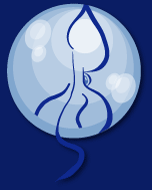

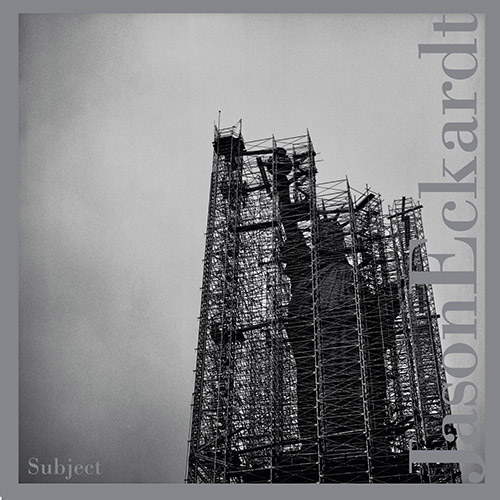
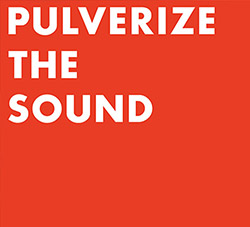
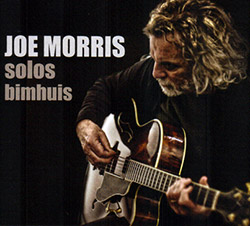


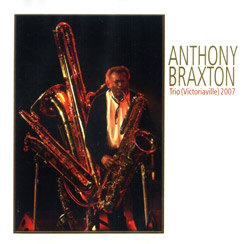
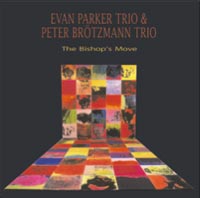

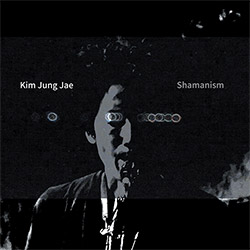

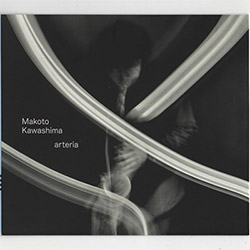
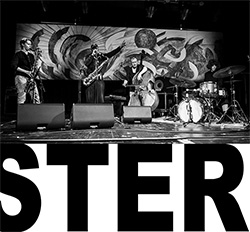
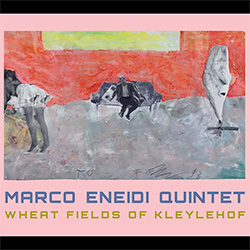
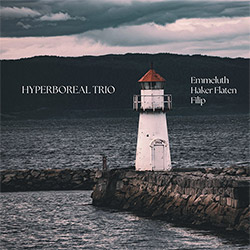
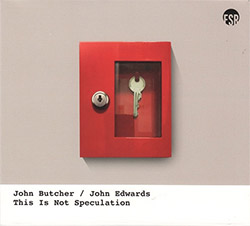
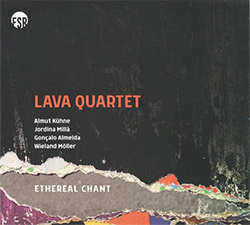
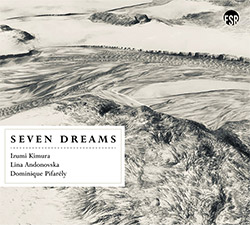
![Deupree, Jerome / Sylvie Courvoisier / Lester St. Louis / Joe Morris: Canyon [2 CDs]](https://www.teuthida.com/productImages/misc4/36404.jpg)
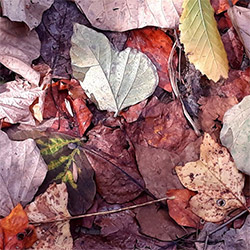
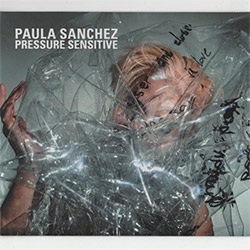
![Eternities: Rides Again [CASSETTE]](https://www.teuthida.com/productImages/misc4/36247.jpg)
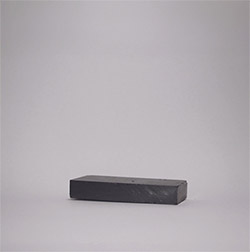
![Lopez, Francisco: Untitled (2021-2022) [2 CDs]](https://www.teuthida.com/productImages/misc4/36438.jpg)
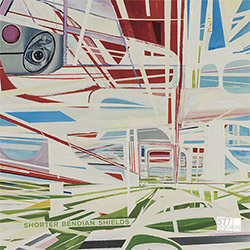
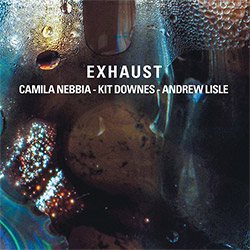
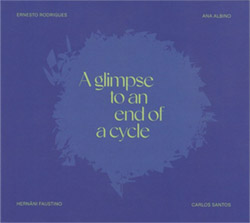
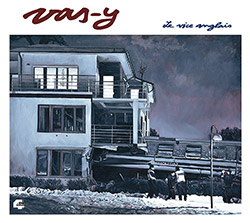
![Eventless Plot | Haarvol: The Subliminal Paths [CASSETTE + DOWNLOAD]](https://www.teuthida.com/productImages/misc4/36232.jpg)

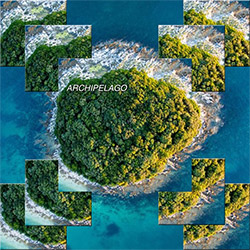
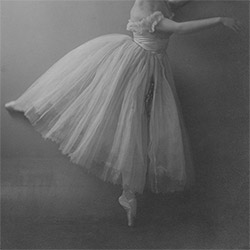

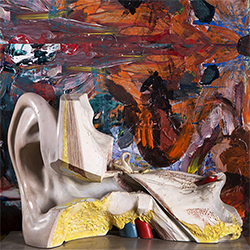
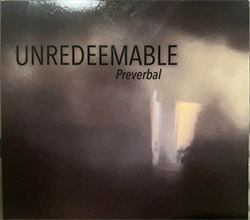
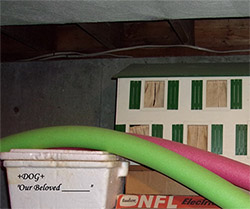
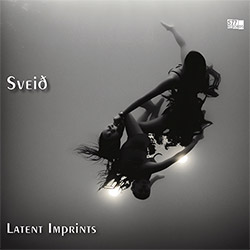
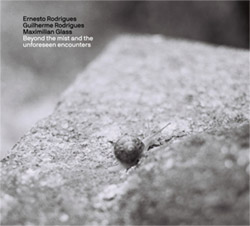

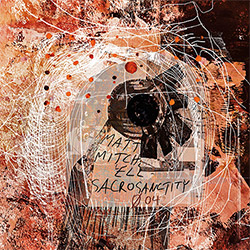
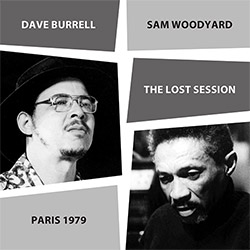
![Eventless Plot | Francesco Covarino: Methexis [CASSETTE + DOWNLOAD]](https://www.teuthida.com/productImages/misc4/36231.jpg)
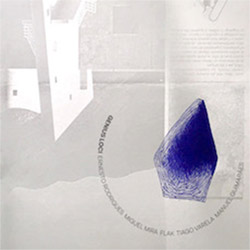
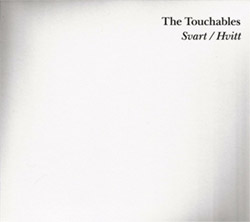

![Das B (Mazen Kerbaj / Mike Majkowski / Magda Mayas / Tony Buck): Love [VINYL]](https://www.teuthida.com/productImages/misc4/36329.jpg)
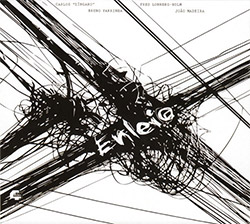
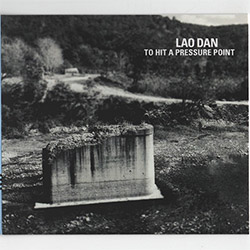
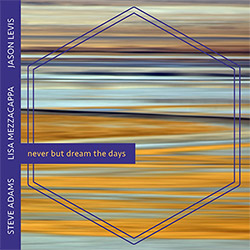
![Hemphill Stringtet, The: Plays the Music of Julius Hemphill [VINYL]](https://www.teuthida.com/productImages/misc4/36409.jpg)
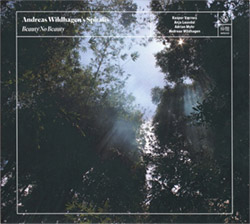
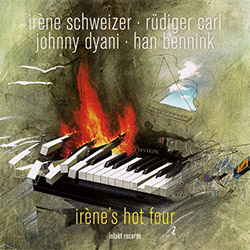
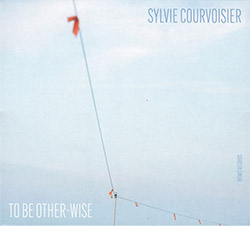
![Halvorson, Mary Septet: Illusionary Sea [2 LPS]](https://www.teuthida.com/productImages/misc4/17952.jpg)
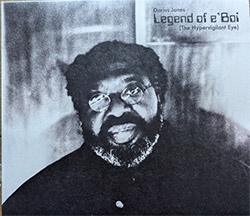
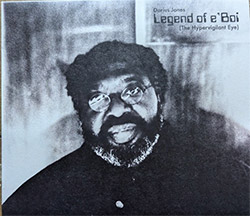
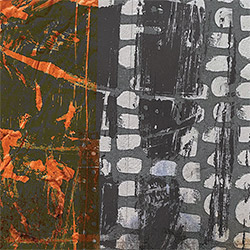
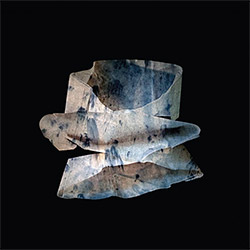
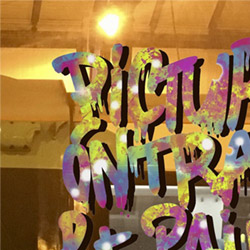
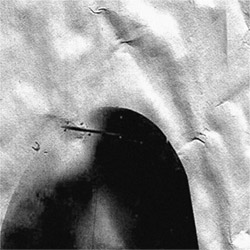
![Money : Money 2 [2 CDs]](https://www.teuthida.com/productImages/misc4/35894.jpg)
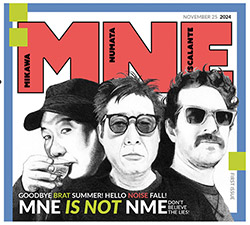
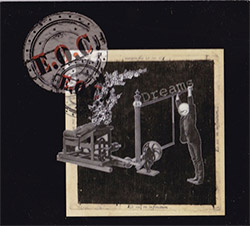
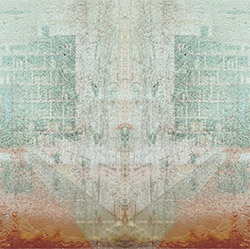
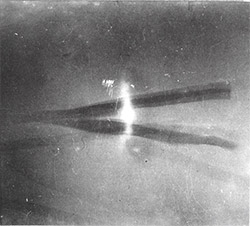
![Klinga, Erik: Elusive Shimmer [VINYL]](https://www.teuthida.com/productImages/misc4/36258.jpg)
![CHANGES TO blind (Phil Zampino): Volume 9 - I Wave on a Fine Vile Mist [CD + DOWNLOAD]](https://www.teuthida.com/productImages/misc4/36061.jpg)

![Wallmart / Rubbish: Asset Protection [split CD]](https://www.teuthida.com/productImages/misc4/35900.jpg)
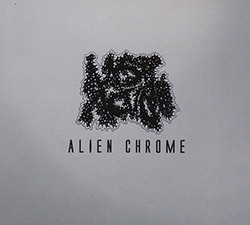
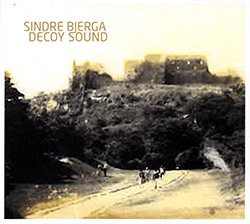
![+Dog+: The Family Music Book Vol. 5 [2 CDs]](https://www.teuthida.com/productImages/misc4/35897.jpg)
![Kuvveti, Deli : Kuslar Soyledi [CASSETTE w/ DOWNLOAD]](https://www.teuthida.com/productImages/misc4/36107.jpg)
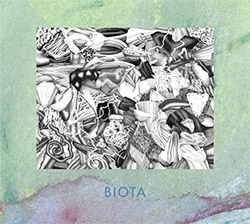
![Nakayama, Tetsuya: Edo Wan [CASSETTE w/ DOWNLOAD]](https://www.teuthida.com/productImages/misc4/36105.jpg)

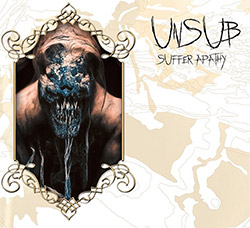
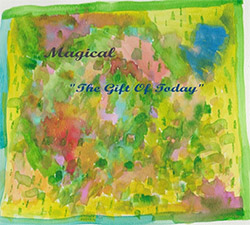
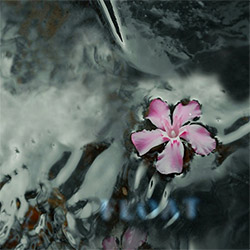
![Yiyuan, Liang / Li Daiguo: Sonic Talismans [VINYL]](https://www.teuthida.com/productImages/misc4/35957.jpg)
![Brown, Dan / Dan Reynolds: Live At The Grange Hall [unauthorized][CASSETTE]](https://www.teuthida.com/productImages/misc4/36245.jpg)
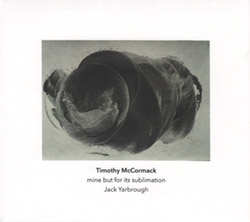

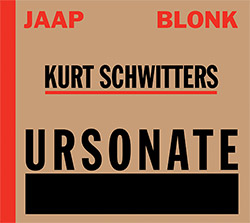
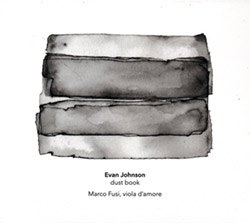
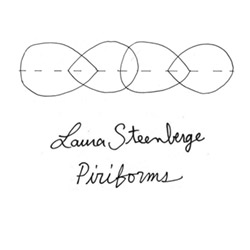
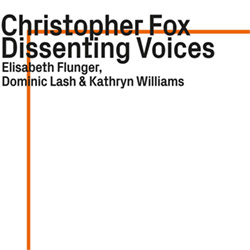
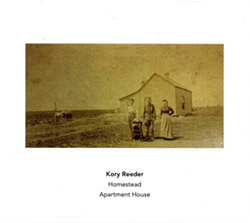
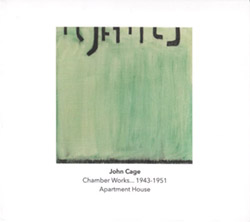
![Palestine, Charlemagne / Seppe Gebruers: Beyondddddd The Notessssss [VINYL]](https://www.teuthida.com/productImages/misc4/36206.jpg)
![Palestine, Charlemagne / Seppe Gebruers: Beyondddddd The Notessssss [NEON GREEN VINYL]](https://www.teuthida.com/productImages/misc4/36207.jpg)
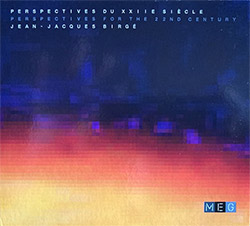
![Laubrock, Ingrid: Purposing The Air [2 CDs]](https://www.teuthida.com/productImages/misc4/35639.jpg)
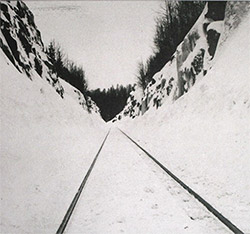
![Yoko, Ono / The Great Learning Orchestra: Selected Recordings From Grapefruit [2 CDs]](https://www.teuthida.com/productImages/misc4/35841.jpg)
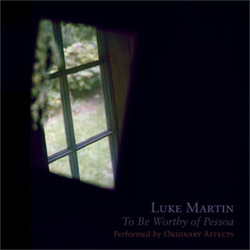
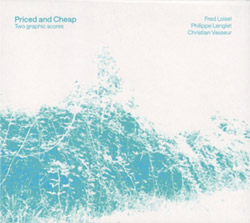
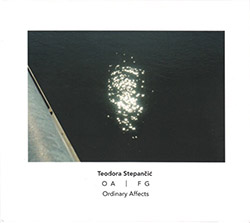
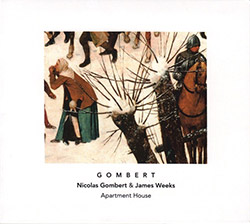

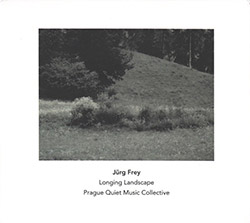


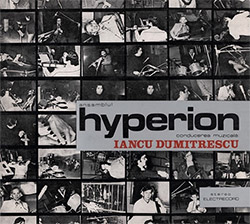
![Zorn, John / JACK Quartet: The Complete String Quartets [2 CDs]](https://www.teuthida.com/productImages/misc4/35609.jpg)

![Lonsdale, Eden: Dawnings [2 CDs]](https://www.teuthida.com/productImages/misc4/35480.jpg)
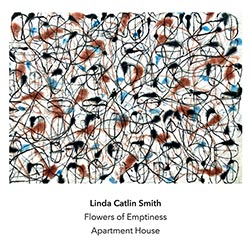
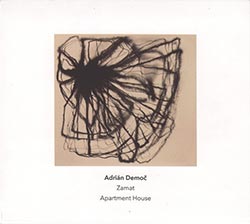
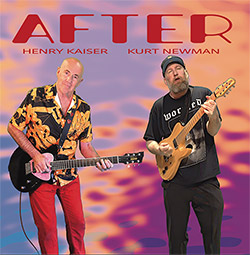
![Sorry For Laughing (G. Whitlow / M. Bates / Dave-Id / E. Ka-Spel): Rain Flowers [2 CDS]](https://www.teuthida.com/productImages/misc4/35985.jpg)

![Rolando, Tommaso / Andy Moor : Biscotti [CASSETTE w/ DOWNLOADS]](https://www.teuthida.com/productImages/misc4/36106.jpg)
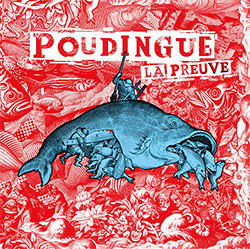
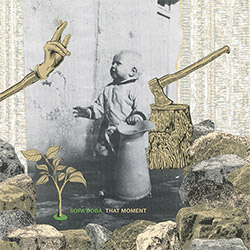
![Electric Bird Noise / Derek Roddy: 8-10-22 [CD EP]](https://www.teuthida.com/productImages/misc4/35970.jpg)
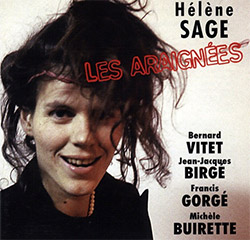


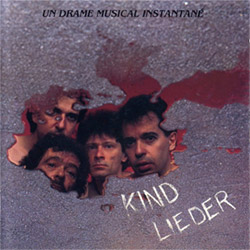
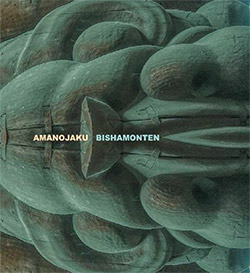
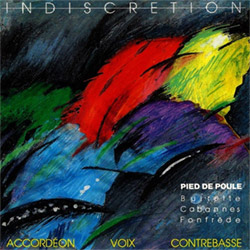
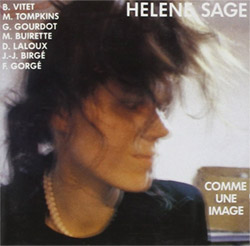
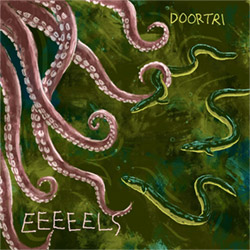
![Elephant9 : Mythical River [VINYL]](https://www.teuthida.com/productImages/misc4/34624.jpg)
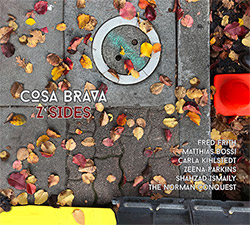
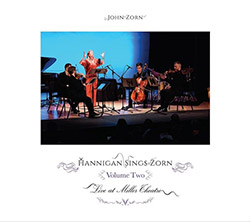
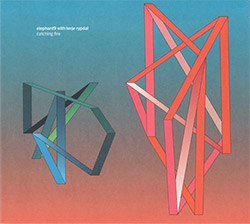
![Elephant9 with Terje Rypdal: Catching Fire [VINYL 2 LPs]](https://www.teuthida.com/productImages/misc4/35355.jpg)
![Deerlady (Obomsawin, Mali / Magdalena Abrego): Greatest Hits [VINYL]](https://www.teuthida.com/productImages/misc4/34876.jpg)
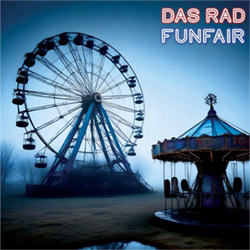
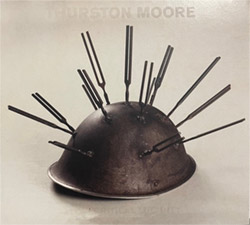
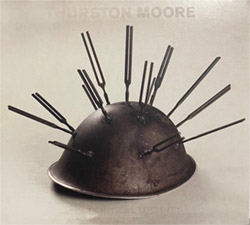

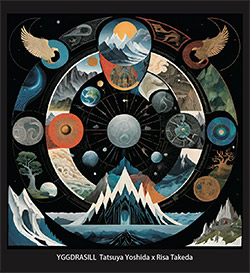
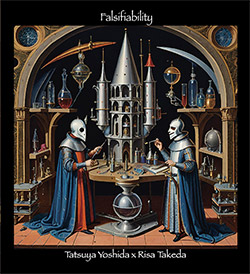
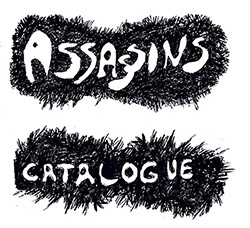
![Surplus 1980: Illusion of Consistency [CD]](https://www.teuthida.com/productImages/misc4/35069.jpg)
![Staiano, Moe: Away Towards the Light [VINYL + DOWNLOAD]](https://www.teuthida.com/productImages/misc4/35037.jpg)
![Coley, Byron: Dating Tips for Touring Bands [VINYL]](https://www.teuthida.com/productImages/misc4/17906.jpg)
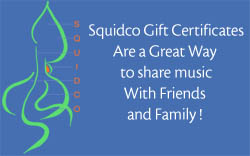
![Lost Kisses: My Life is Sad & Funny [DVD]](https://www.teuthida.com/productImages/misc4/lostKissesDVD.jpg)